The Bristol Bay Fishery
 |
WHY WILD?
SUSTAINABILITY
Why choose wild Alaska seafood?
Alaska’s state constitution states that: “Fish…be utilized, developed and maintained on the sustained yield principle”. In other words, salmon protection is uniquely written into the Alaska state constitution. State groups, like the Alaska Department of Fish & Game, work hard to ensure that the salmon population remains healthy while also supporting the commercial harvest for fishermen like us. Seafood is an undeniable economic resource for Alaska; the industry directly employs 60,000 people in the state, which means there are at least 60,000 people committed to protecting the environment that is home to this industry--not to mention the thousands more who enjoy the product at home! Further, buying Alaska supports the world’s last all-wild salmon run in Bristol Bay. Although Alaska is home to 47 different fish species, our fishermen focus on catching sockeye salmon, one of the five species of salmon. We source other seafood responsibly from fishermen peers so you can do all your seafood shopping in one spot, knowing you’re making an ethical, sustainable choice!
Bristol Bay, Alaska
Bristol Bay hosts the world’s largest commercial sockeye salmon fishery. Beginning in late May every year, salmon make the run upriver to spawn in one the five rivers that feed into Bristol Bay, where we fishermen spend our time each summer. On average, 35.1 million sockeye salmon return to the rivers annually.
Because of the bay’s remote environment away from industrial development, and its healthy, largely untouched watershed, Bristol Bay is a vital refuge for both oceanic and freshwater fish species – including our beloved sockeye salmon.
Every day, biologists count the salmon running into each river system as the salmon swim into protected spawning areas. Each commercial fisherman in Bristol Bay is constantly in contact with the biologists who are informing the fisherman whether or not they may put their nets in the water. Alaska’s diligent tracking and management of the salmon population is protecting future generations of salmon to repeat the process as well as sustaining the world’s salmon consumption.
Bristol Bay is a unique source of salmon because the run remains completely unmanipulated by humans, save for close management and commercial fishing. This stands out because other regions of Alaska support their fish habitat with hatcheries; it is important to note that salmon from the southeast are not farmed. However, in order to support the fishery, many of the rivers in other parts of Alaska release hatchery-born salmon into the rivers to support the fish population. Bristol Bay’s population has remained strong enough to avoid this type of support through tight management and responsible fishing; we are proud to continue that tradition and stand-down when the law says it’s time to protect the salmon rather than catch them to bring them home to you.
What can you do?
Buy direct from the fisherman! Buying seafood from the fishermen gives you confidence that your fish have been properly handled, sustainably harvested from Alaska waters, and available to you at a fair price. Buying from Alaska may not be a traditionally “local” choice, but did you know that some seafood caught in the US is frozen, shipped to China for processing, and then shipped back to the U.S.? Buying from us minimizes your food miles when buying Alaska wild. We strive to source from only the best Alaska fishermen to provide you with a variety of other wild-caught salmon, whitefish, scallops, crabs, and more. When you know your fishermen, you know where your quality seafood came from!
 |
Fresh v Frozen
Why Wild for Salmon stands by the quality and taste of once-frozen seafood.
“The freshest fish is sold frozen, unless it comes from local waters.” - Jane Brody, Health Columnist for the New York Times
At Wild For Salmon, you will find almost all of our seafood products are once-frozen, or flash-frozen shortly after catch. Our salmon and wild seafood products are carefully handled, chilled and frozen within hours of harvest in order to offer peak preservation of flavor, texture, color and nutritional content. Seafood freezes exceptionally well as nutrients found abundantly in fish such as protein, essential minerals and vitamins A and D are unaffected by the freezing process. You’ll never taste Alaska seafood this fresh, unless you get it right off the boat!
Often a surprise for many of our customers: the "fresh" fish found in most fish markets is very rarely the peak quality that the name implies. Fresh fish frequently rests in display cases for hours or days before purchase, exposing your seafood to air and light, fostering the growth of bacteria which can quickly spoil delicate fats such as Omega 3s. Fresh too often simply means “thawed”; you can never be certain with previously-frozen product: how long it has been thawed, how long after it was caught until it was frozen, or if it had been thawed or refrozen one or more times before. Wild For Salmon strives to make harvesting, processing, and transportation as transparent as possible. This allows our customers to make the most informed decisions throughout the often-confusing seafood buying process.
This may lead to wonder about the thawing process. Once you received your beautiful frozen vac-packed salmon, how do you preserve its taste? If you are looking to eat it that evening, within a few hours, your best bet is to submerge the unopened package in water until thawed. If you have the time, the best way is to thaw the fish in your refrigerator over the course of 24 hours. Diane Morgan, author of the fantastic cookbook, Salmon, explains this and many other salmon-related processes beautifully.
Lastly, but certainly not least, frozen seafood allows for a much more sustainable and earth-friendly option to reach your plate. Air-freighting thawed salmon results in substantial increases in environmental impact. Container ships are still the most efficient and carbon-friendly way to transport frozen food. Wild For Salmon is proud to use this method of slow-shipment to offset our carbon footprint while transporting our salmon from our processor in Alaska, to our storage facility in Seattle, WA.
For more on this topic, see our fall 2017 blog post.




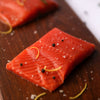 Wild Alaska Salmon
Wild Alaska Salmon Alaska Salmon Burgers
Alaska Salmon Burgers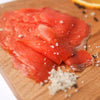 Smoked Salmon & Seafood
Smoked Salmon & Seafood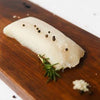 Wild Alaska Whitefish
Wild Alaska Whitefish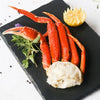 Wild Shellfish & Shrimp
Wild Shellfish & Shrimp Wild Albacore Tuna
Wild Albacore Tuna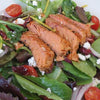 Canned Seafood
Canned Seafood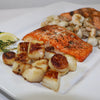 Meal Box & Samplers
Meal Box & Samplers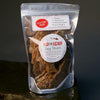 Pet Products
Pet Products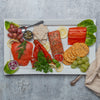 Gifts
Gifts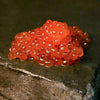 Specialty
Specialty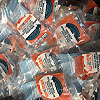 Wholesale Ordering
Wholesale Ordering
